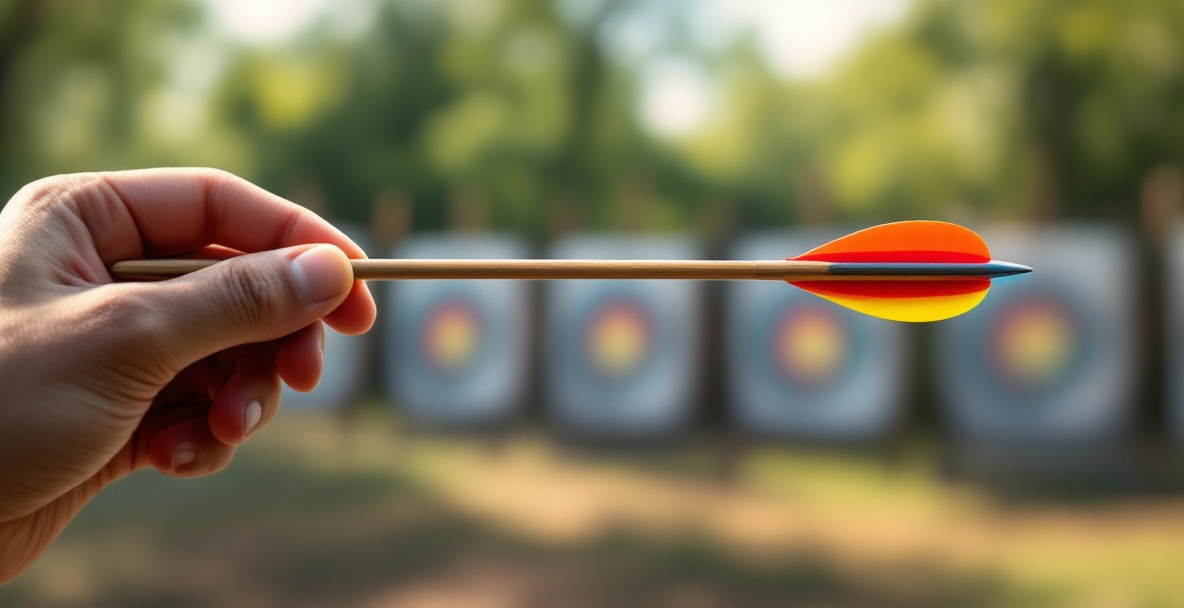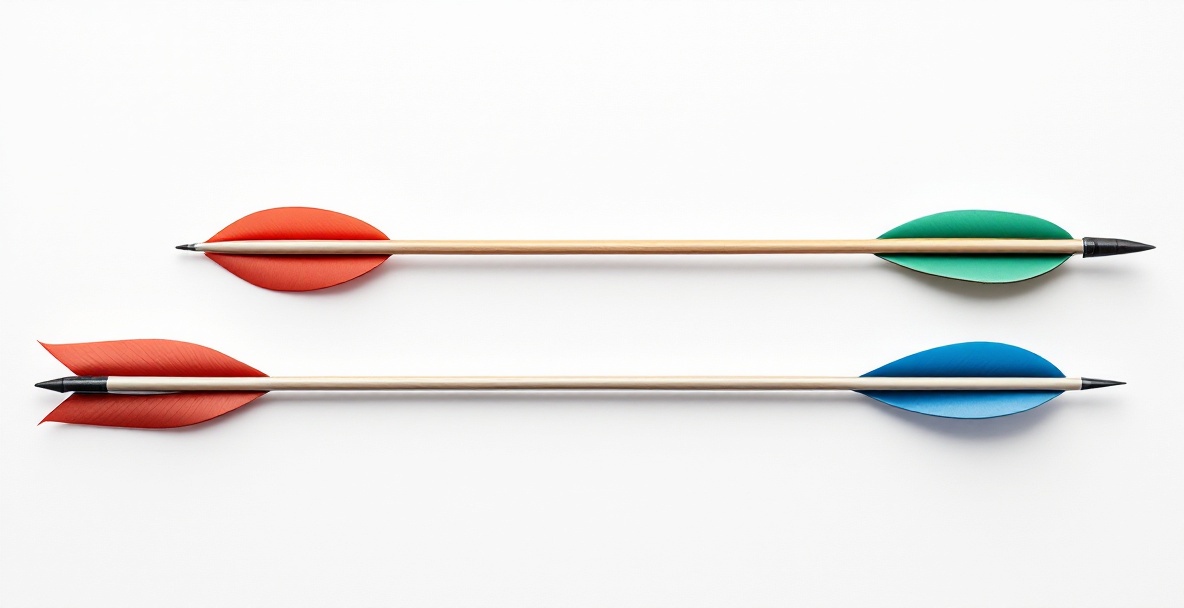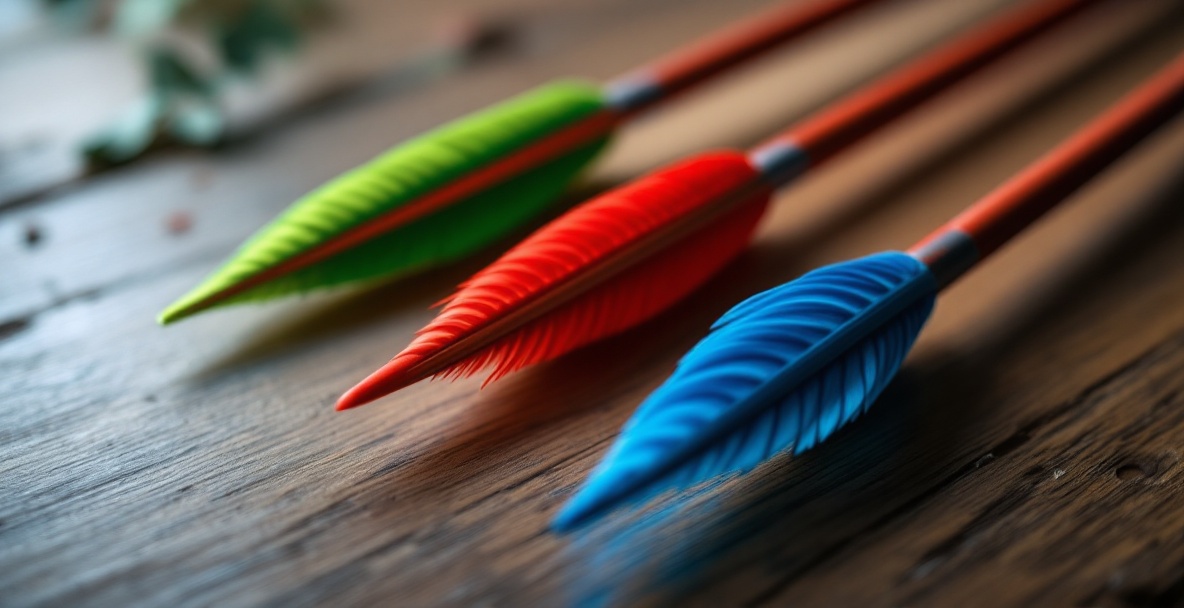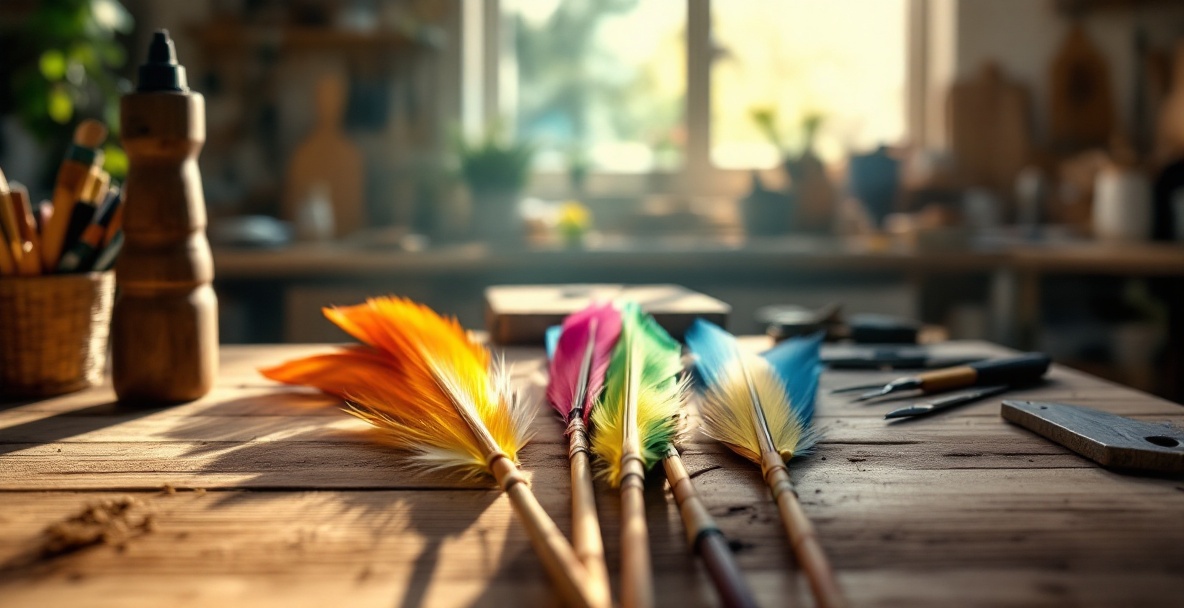Ever notice how a tiny detail can change everything? The fins on your arrow may seem small, but they play a huge role in keeping your shot true. Fletching makes your arrow fly straight and hit its target, much like our stabilizer weights help balance your bow at OneX Archery. If your arrows have been off lately, it might be time to take a closer look at these small, yet powerful, components and see how they can transform your archery game.
What Is the Big Fuss About Fletching?

Fletching 101: The Basics
Fletching means the vanes or feathers that attach near the back end of an arrow. Traditionally made from real feathers, newer versions use synthetic materials to deliver specific performance. These little fins work by adding drag at the rear of the arrow, helping it stay stable and fly true to your aim. Most setups use three fletches spaced evenly around the shaft, though some may have two or four depending on the design. The way these fletches are glued and set at precise angles makes all the difference in how the arrow behaves during flight.
Why Fletching Really Matters
Fletching isn’t just for show. It is essential for accuracy. Without it, arrows can twist and tumble unpredictably in the air. The right fletching corrects small errors in your release by generating just enough spin to keep your arrow on track. Whether you are aiming at a target or preparing for a hunt, proper fletching results in tighter groupings and more reliable shots. It also helps your arrow combat wind and weather, ensuring that every shot has the best chance of hitting its mark.
Exploring Different Fletching Types and What They Offer

Natural Feathers Compared to Synthetic Vanes
Feather fletching has a natural charm. These lightweight options provide excellent stabilization by creating minimal drag while flexing when they pass through an arrow rest. This forgiving nature suits archers who need a little extra help with their form. However, feathers can be more delicate, costlier, and easily affected by moisture, which may cause them to lose their shape over time.
Plastic vanes, on the other hand, are built for durability and consistency. Made from robust materials like polyurethane, these vanes keep their shape no matter the weather and work well in unpredictable conditions. Although they do not compress like feathers when contacting an arrow rest, proper bow tuning and the right rest choice can negate this issue and deliver a high level of accuracy.
Straight, Angled, and Spiraled Fletching Forms
The way your arrow’s fins are arranged can change its flight entirely. Straight fletching runs along the shaft’s axis and adds very little drag or spin, making it ideal for quick, flat trajectories at short to medium ranges. An angled setup tilts the fletching slightly, creating a moderate spin for added stability without sacrificing too much speed. The spiral, or helical, design wraps the fletching around the shaft much like a spinning football, providing extra spin and ensuring your arrow holds a steady course, even when the wind picks up.
Matching Fletching with Your Bow Style
If you use a compound bow, you might lean towards synthetic vanes in an angled or spiraled configuration. The mechanical release on a compound bow pairs well with the sturdy design of plastic vanes, and the arrow rests used typically hold the arrow securely. This combination usually results in a perfect mix of speed and stability.
For those using recurve or traditional bows, the situation is a bit different. The finger release common with these bows causes more movement in the arrow at the start. Here, natural feathers work well because they flex upon hitting the arrow rest, forgiving slight inaccuracies in your form. Many archers choose shield-cut feathers set in a spiraled arrangement to achieve solid stabilization along with enough clearance for a smooth release.
Crossbow users face unique challenges since their bolts are shorter and move at higher speeds. Short, stiff vanes set slightly off-center work best here. They offer enough stability without adding excess drag, and their lower profile fits well within the confined space of crossbow rails.
How Fletching Size and Shape Affect Arrow Flight

Long or Short Fletching: What to Choose
Long fletching, typically over 4 inches, adds plenty of surface area to stabilize the arrow. This extra drag can correct slight misfires or imperfections in your arrow’s spine, making it a smart choice for beginners or for challenging conditions. The catch is that the increased drag may slow the arrow down and change its arc, so you might need to fine-tune your aim a bit more.
Short fletching, usually under 2 inches, minimizes drag and boosts arrow speed. This results in a flatter trajectory and rapid delivery to your target, which is why many competitive shooters prefer it in controlled environments. However, with less stabilizing force, any minor release errors might have a more noticeable impact on your arrow’s flight.
Low-Profile or High-Profile: Which Is Better for You?
The height of your fletching plays a vital role in how your arrow flies. Low-profile vanes sit close to the shaft, reducing drag and avoiding contact with the arrow rest, which is great if space is tight. High-profile vanes, by contrast, offer more surface area and enhance stability by generating additional drag. This extra correction can be just what you need if your arrow tends to wobble. Ultimately, your choice depends on your bow’s design and your individual shooting style.
Make Your Own Fletching: A Hands-On Approach to Arrows

Kick Off Your DIY Fletching Journey
If you are ready to put a personal touch on your arrows, making your own fletching can be a rewarding challenge. Start with a quality fletching jig that holds your arrow steady and helps position the fletches at precise angles. Choosing the right glue matters too, as feathers and plastic vanes each need a specific adhesive to stick properly. Once you have your tools and materials, work carefully and let the glue set completely between each step. The satisfaction of watching your arrows come to life makes the effort worthwhile.
Pitfalls to Watch Out For
A frequent error is using the wrong adhesive for your fletching type. Feathers need a different glue than plastic, and if you mix that up, your fletches might not stick during your shots.
Another common pitfall is not cleaning your arrow shafts well. Even a tiny bit of oil from your fingers can prevent a strong bond, so take the time to clean them with alcohol or a dedicated shaft cleaner.
The alignment of your fletches is also crucial. If they are placed at different angles by mistake, your arrow might not fly as true as you expect. Consistent spacing and careful placement will pay off in performance.
Rushing the glue drying process is a mistake many archers make. Make sure you let every arrow dry completely before using it to avoid any mishaps on the range.
Scientists have studied the aerodynamics of fletching and have shown that even slight design changes can affect stability and accuracy. This research underlines why every detail in your fletching is key to achieving better arrow flight.
Wrapping Up: Tying It All Together
A Quick Recap of Important Points
We have explored how the simple concept of fletching can change your arrow’s flight and overall performance. From picking between natural feather fletching and durable plastic vanes to choosing between straight, angled, or spiraled designs, every decision shapes your shot. We looked at how bow type and fletching size further influence performance, and how these details can mean the difference between success and a missed mark. Understanding these factors is essential if you want to bring out the best in your archery skills.
Your Next Steps in Archery
Now that you know how different fletching options affect your arrow’s flight, it might be time to experiment with what works best for you. Fine-tune your configuration and see how your groupings improve with every change. Just like our stabilizer weights at OneX Archery help optimize your bow performance, the right adjustments to your fletching can elevate your shooting game. If you are new to customizing your arrows, start simple and gradually progress as you gain confidence and experience.
Ready to take your archery performance to the next level? Visit OneX Archery to explore our precision-engineered stabilizer weights that complement your newly optimized arrows. Just as the right fletching stabilizes your arrow in flight, our weights help stabilize your bow during the critical moment of release, creating a complete system for maximum accuracy and consistency.
Leave a Reply